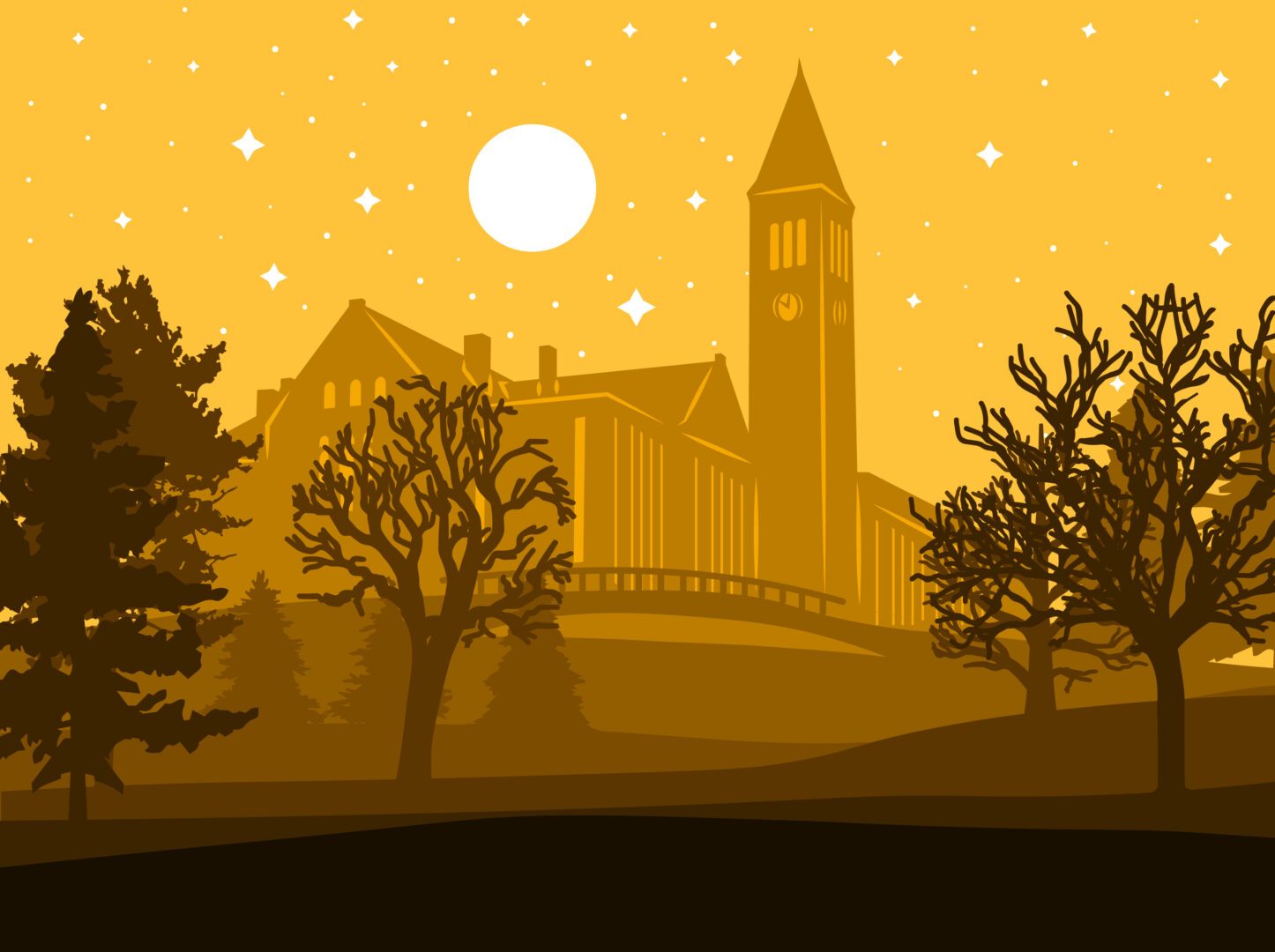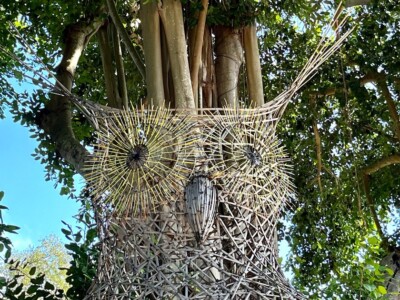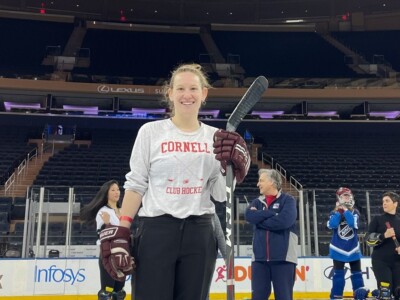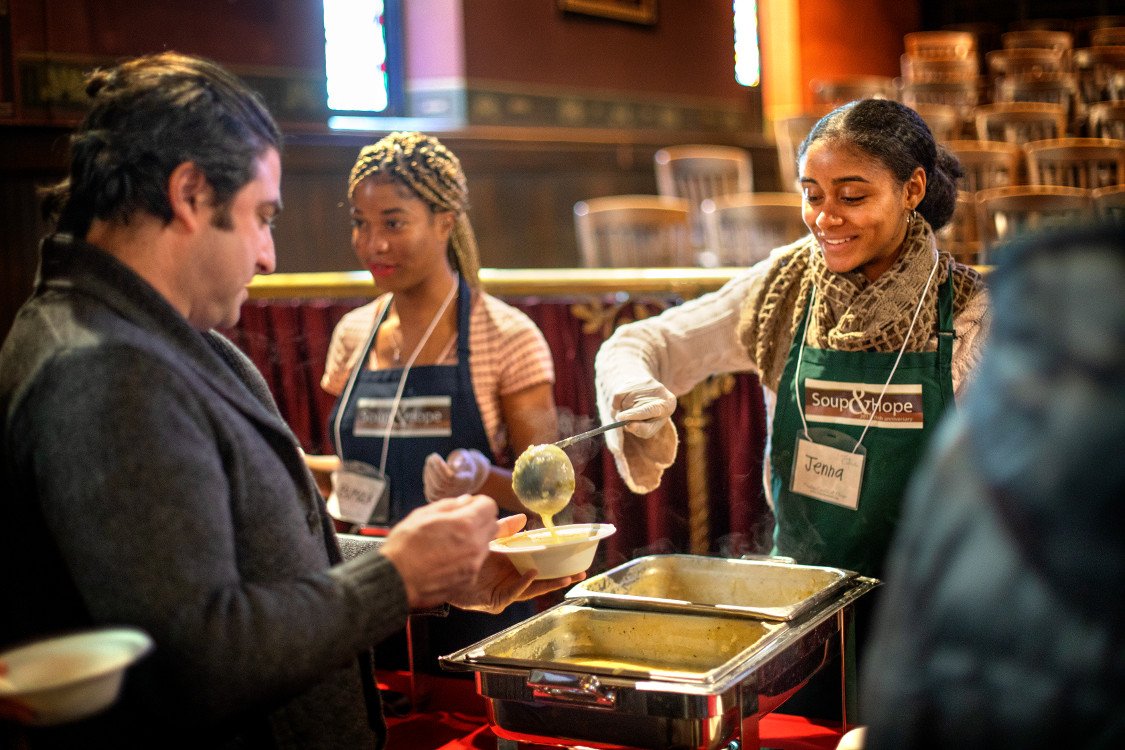One thing Cornellians have in common is WINTER. For some, winter in Ithaca was a chilling experience that still brings shivers and memories of snow that turned to ice, to slush, and back again over the course of a few hours, days, weeks, and months.
Some of us embraced the season, sliding on makeshift sleds into snow drifts or enjoying the whiteness of a new-fallen snow on our walk to campus. Others survived by snuggling with a warm cup of tea and fuzzy socks, watching frozen crystals form on the outside of our windows. No matter how you feel about it now, making it through winter in Ithaca is a rite of passage at Cornell.
To lighten your winter spirits, we reached out to Cornellians near and far to hear how they’re coping with winter in their part of the world. From ice swimming under the northern lights in Lapland, to beachcombing in Sydney, to bingeing on fondue in Switzerland—we’re pleased to share reflections and tips on surviving winter from Cornellians around the globe. Spoiler alert: there’s even a primer on where to find the best sledding in Ithaca from a Cornell fitness instructor!
We hope you enjoy these seasonal stories and images from members of your Big Red family around the world, including:
• How much fun is sledding? featuring Matt Hayes
• The land where Santa lives featuring Deiv Salutskij ’71
• The fourth season featuring Lei Lei Wu ’21
• Canoeing the Slope featuring Christian Polman ’05, MBA ’11
• The view from down under featuring Harry Chiam ’85
• 50 years and counting! featuring Dave Moriah ’72
• Riding a one-horse open sleigh featuring Enjue Wang MEng ’08
• Sled dogs: born to run featuring Heather Huson ’97, PhD
• Fondue (recipe included) featuring Bernie MacCabe ’75, MBA ’79
• Awe-struck featuring Jordan Boersma
• Winter escape: Patagonia! featuring Nick Groos ’84
How much fun is sledding?

Matt Hayes has lived in Ithaca for the past 25 years. He grew up about 35 miles north of Syracuse in the Lake Ontario snow belt, where, he says, they have “real winter.”
Matt is a snow lover and a big advocate for getting outdoors and enjoying winter sports, like winter fat biking, snowshoeing, downhill and cross-country skiing, and every kind of sledding. Matt shares his primer on the joy of sledding here.
Sledding 101
“There are lots of different kinds of sleds, and they tend to be best on different kinds of snow. Classic runner sleds like the flexible flyer are great on hard-packed surfaces, like the plowed, hardpacked roads in the Botanic Gardens near Flat Rocks. These sleds offer a little bit of steering, and on that surface are fairly fast and moderately exhilarating.
Toboggans are another classic kind of sled, designed to pile multiple people on—between 3 to 6 riders, depending on their size. Toboggans will fly down a steep hill with 4 to 6 inches of fresh snow. Like most flat-bottom sleds, each time you go down a run they get faster and faster as the snow gets packed more firmly. Because you’re in a group, the laughs and giggles abound! Although not common anymore, toboggan chutes used to be popular. Cornell used to have one near Toboggan Lodge and Beebe Lake.
The most common kind of sleds are modern plastic sleds and snow tubes. Some towns in the north country have specific official or unofficial hills where these are used. There, the snow is usually packed, which makes everyone’s sleds go fast right from the first run. Like classic toboggans, these sleds offer minimal steering and, in the case of tubes, even less. As the tubes often spin on the way down the hill, you can enjoy lots of excitement! Before they shifted to trayless dining halls, ‘traying’ was also popular at north country colleges and universities, including on Libe Slope.
‘Backcountry’ refers to activities done in the wild, as opposed to at a particular commercial venue. These are often places that you have to make your own way in to, on XC skis or snowshoes, and generally involve a human-powered adventure. Glades is a term they use at downhill ski resorts to refer to slopes with trees on them, fairly widely spaced so that you can ski between them, not like a dense forest.
There are a few sleds like the Mad River Rocket that are suitable for backcountry use. They are designed to be very steerable and to work on steep slopes in very deep snow. The sleds seem expensive but are quite durable—I’ve had mine for 20 years now. It is essentially like a knee board for snow (except there’s no boat to pull you back up the hill).”
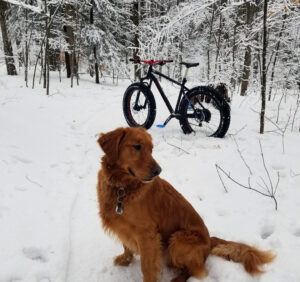
Matt works for Cornell Fitness Centers, hiring and training student employees, and teaching weight training, fencing, and mixed conditioning—including the popular 8-O’Clock Rock class—for the PE department. He reminds Cornellians in the Ithaca area that Cornell Outdoor Education is a great resource for those looking to try out new winter activities. “In addition to offering classes, they also rent a variety of winter play gear,” he says.
Matt’s winter hack: “There’s no such thing as bad weather, only bad gear. You need wool socks, some kind of high-tech base layer, a good hat that covers your ears, Merino sweater, and powder-resistant down outer layer. Add a scarf and decent gloves and you’re good down below 0 degrees!”
The land where Santa lives
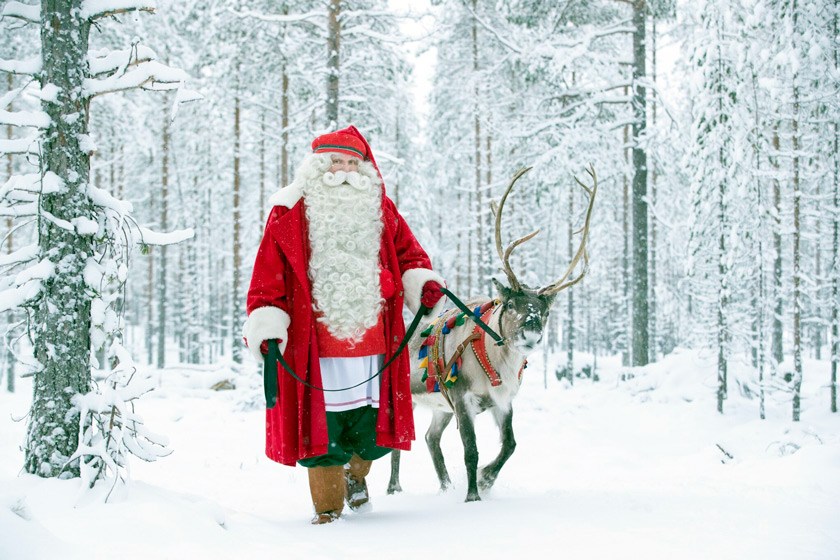
Deiv has spent all but 21 of his 76 winters in his native Finland. Though winter days are short—with just under 2 hours and 45 minutes of daylight on January 1—Deiv says that the snow lights up the landscape, along with the northern lights. Deiv, a graduate of the Cornell Nolan School of Hotel Administration, has spent the bulk of his career helping to establish Lapland as a tourist destination.
“Part of my job has been opening Lapland to markets the world over, and making sure that everyone knows that Santa comes from Rovaniemi, Lapland!” he says. Deiv shared this historical context on Santa’s official home, reprinted with permission of Visit Rovaniemi.
Rovaniemi, the Official Hometown of Santa Claus®
“Santa Claus’ original home lies in the mysterious Korvatunturi in Finnish Lapland. Since the exact location is a secret known only to a chosen few, Santa decided to establish an office in Rovaniemi, the capital of Lapland, in 1985. Rovaniemi received the status of the Official Hometown of Santa Claus in 2010.
Santa Claus Village, located on the Arctic Circle, draws more than 500,000 annual visitors from all around the world. As probably the most famous person on the planet, Santa Claus recognizes his global influence and the responsibility that comes with it.
‘I’m an ambassador of good will, love, and peace, and wish nothing but happiness to the people of the world,’ he says without a hint of hesitation in his voice. ‘I sincerely hope as many people as possible have the chance to come visit me in Rovaniemi. Nothing makes me happier!’ he says merrily.
Here’s how it all started. Rovaniemi was almost completely destroyed in World War II. In 1950, Eleanor Roosevelt, the wife of U.S. President Franklin D. Roosevelt, came to visit Rovaniemi to witness the rebuilding process. She wanted to visit the Arctic Circle, and Rovaniemi officials rushed to build a cabin eight kilometres north of the city. This cabin marked the birth of Santa Claus Village and still stands today, next to the Santa Claus Main Post Office.
Today, Santa Claus Village is Lapland’s best-known attraction and a resort in its own right. Visitors enjoy husky and reindeer rides, snowmobile tours, ice and snow constructions, and even an igloo hotel.”
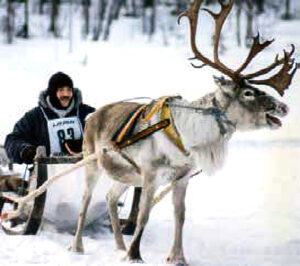
Deiv hosted members of the Cornell Hotel Society, including Dean Robert Beck, in 1976, when conditions in Rovaniemi were still pretty rustic. “Imagine coming to the Bear’s Den in minus 40-degree weather and having an ice-cold vodka awaiting you, followed by a steaming kettle of reindeer stew, and a hot sauna for those who wanted one,” he says.
In 1992, Deiv hosted 110 Cornellians at Rovaniemi. Participants enjoyed a visit to Santa, followed by more vodka and reindeer stew. This description comes from the CHS history book commemorating the event: “Outside, glasses galore of chilled Finnish Vodka were lined up, once swallowed warming heart and soul. This was just what we needed to get energy for the ‘Polar Olympics’: tandem skiing, golf on ice, ice fishing, reindeer racing, and snow-scooter race, lassoing a reindeer, and ending with sauna endurance.” They had so much fun that Deiv invited CHS members back once again in 2005.
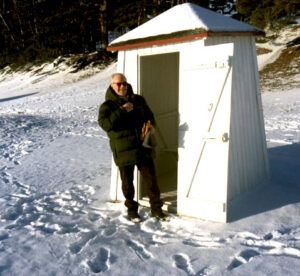
Personally, Deiv enjoys ice skating and ice swimming in winter. Ice swimmers prepare in a heated hut located nearby a hole cut in the ice. Deiv says he usually jogs prior to submerging in the water, which can dip down to 0 degrees C (32 degrees F). He says he remains in the cold water for about three minutes before heading to a warm pool or heated sauna to warm up.
“I do it regularly October through March,” Deiv says, adding, “The rest of the year I do it on the beach, but then the temperature is a bit higher. It is very invigorating and healthy! I hope to continue this for years, as it is good for your blood circulation.”

Deiv notes that summers in Lapland are glorious. “We get double time then, since there is no night in Lapland for about five months,” he says.
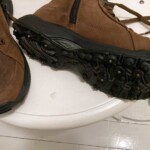
Deiv’s winter hack: “Winter is easy here, as we are well prepared. We clean the roads when snow comes, unlike in Ithaca where roads can be closed a few days each winter because of snow. Also, we have spikes in our tires so you can still drive—carefully when it’s slippery, of course. We also have spikes under our shoes, as streets can be slippery from snow, rain, and ice.”
The fourth season
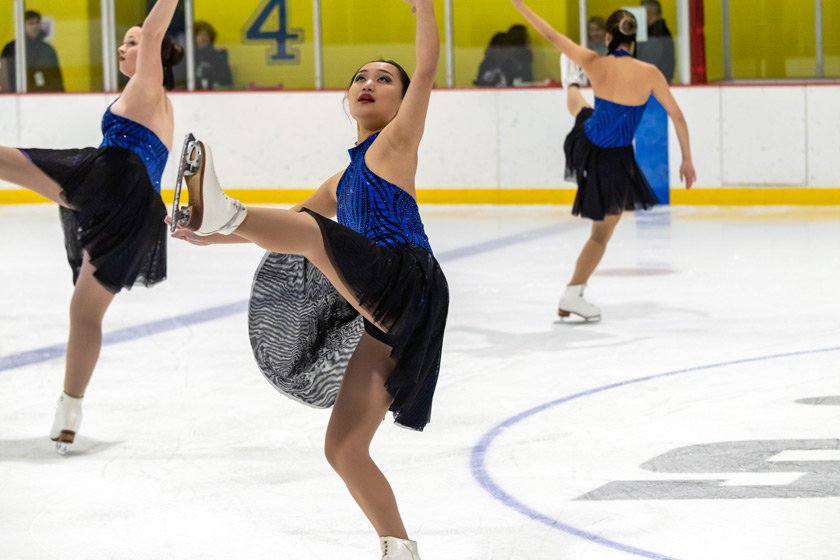
Lei Lei Wu started ice skating at the age of seven. Before she moved to Ithaca to attend Cornell, she lived in Michigan and New Jersey. “Winter has been a returning constant in my life,” she says.
At Cornell, Lei Lei was actively involved with Cornell Synchronized Skating until the start of the pandemic in spring 2020. The Cornell team is self-coached, unlike the majority of teams they compete against. “Our synchro team is the only self-coached team in the region, and while we take a lot of pride in that and have a lot more fun because of it, we were historically an underdog team,” she says.
She recalls one competition in particular, in Connecticut in early December 2019. Unfortunately, synchronized skating competitions often occur at inopportune times in the semester—in this case coinciding with fall semester finals.
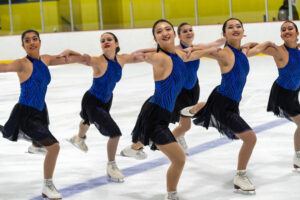
“Our plan was just to get to the rink, compete, and get home so we could study for finals. So that’s what we did. We got to the rink, warmed up, got dressed, and skated our program as we’d practiced for the past semester. After we performed, we rushed out, not even waiting for the results,” Lei Lei says.
As they were driving back to Ithaca, they received a call from a team member asking them to turn around and return to the rink. When they got there, they learned that they had won a medal.
We went back to the locker rooms, put our skates on again, and went back on the ice for the awards ceremony,” she says. “All the other teams were still in their competition dresses and whatnot, and we looked incredibly out of place, clad in our black jackets and leggings with only remnants of our performance makeup left. But we had fun with it,” she adds.
Unfortunately, Lei Lei has not had the opportunity to skate since the start of the pandemic. She recently started a job as staff writer with a healthcare and medicine digital news site, and she looks forward to donning her skates again one day soon.
Lei Lei’s winter hack: Long socks!
Canoeing the Slope

Christian spent much of his childhood in the Alps, where, he says, winter is embraced as a way of life. “From the fabulous cheesy potato dishes, warm spiced wines, mountain cheeses and gins, to the fantastic skiing, sledging, and snowshoeing—they combine to make the wintery Alps the perfect setting in which to enjoy winter weather,” Christian says.

Of all his 38 winters, Christian says his favorites were the six he spent in Ithaca as an undergrad and grad student at Cornell. “My favorite winter memory most definitely takes place in Ithaca,” he says, adding, “In fact, almost all of them do, given the significant share of student time that takes place in winter.”
Canoeing the Slope
Christian has an especially fond memory of a day in December 2003, when he was a senior studying for final exams in the Kinkeldey Room in Uris Library. The room had just undergone an extensive renovation and its large windows looked out over Libe Slope. Christian and his friends saw that a snowstorm was raging outside, and then they noticed something that really caught their attention: a group of students carrying a canoe up the Slope. Here’s what happened next:
“We watched in anticipation as they marched up, hoping they would be brave enough to ride it down the Slope. Sure enough, when they got to the top, they jumped in and wizzed down the Slope at speeds typically seen in bobsleds. Without hesitation, we slammed down our books and ran outside to join in the fun. After missing a few trees, running over the road at the bottom once or twice, and tipping the canoe over mid-flight more than a few times, we decided it was time to throw in the towel. No injuries this time, but we decided it was probably best if that was the last time we would ride a canoe down Libe Slope!”
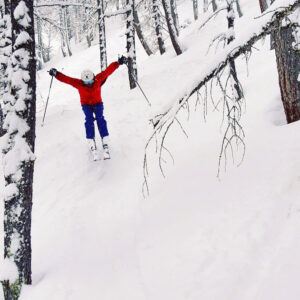
Christian’s winter hack: “Winter has so much to offer: from the stillness of a day after a big snowstorm, to the wonderful sound of crunching snow under your boots, snowball fights, and all the outdoor sports in winter, from snowshoeing to skiing. Enjoying the great outdoors during winter comes down to having the right gear. Make the investments required if you want to embrace and enjoy everything winter has to offer!”
The view from down under

The photo of Harry Chiam ’85 above shows him wearing his only winter coat. Harry, who has lived in Sydney for the past 30 years, says that in his experience, winters there are definitely getting warmer.

“Officially, winter in Sydney runs from June to August,” Harry says, adding, “but only about seven days are really cold, due to climate change. In five years, I expect I’ll be wearing t-shirts in winter.”
According to Harry, the ocean temperature falls from about 77F in summer (December through February) to about 64F in winter. While some residents swim all year round, Harry waits till the air temperature warms to bathe. Air temperatures drop to about 50F in winter, from highs topping 100F in summer.

“On a very hot day, we stay cool by jumping into the pool,” Harry says. “Some beachside bars are also good places to chill out,” he adds.
Harry’s favorite winter memories are of traying down Libe Slope as a student at Cornell. He spent one winter in Montreal: “Brrrr, was that cold!” He also recalls one summer in Edinburgh, Scotland, where he says, “the summer felt like winter to me.”
Harry’s winter hack: “To survive the Ithaca winter, I suggest layering your clothes—so having a t-shirt, sweat shirt, and then a coat. On campus, try to make friends with Cornellians who live in California or Florida. That vastly improves your chances of getting invited down to a warm climate during spring break.”
50 years and counting!

Dave Moriah ’72 credits the 28-day Outward Bound course he took as an undergraduate with changing the trajectory of his life. When he returned to campus, he persuaded Cornell’s PE department to add a few outdoor offerings to their course roster.
“I taught several and recruited a team of Cornell students who were outdoor enthusiasts to teach others,” Dave says. He fondly recalls the mountaineering and ice climbing courses he taught back in the 1970s and 1980s.
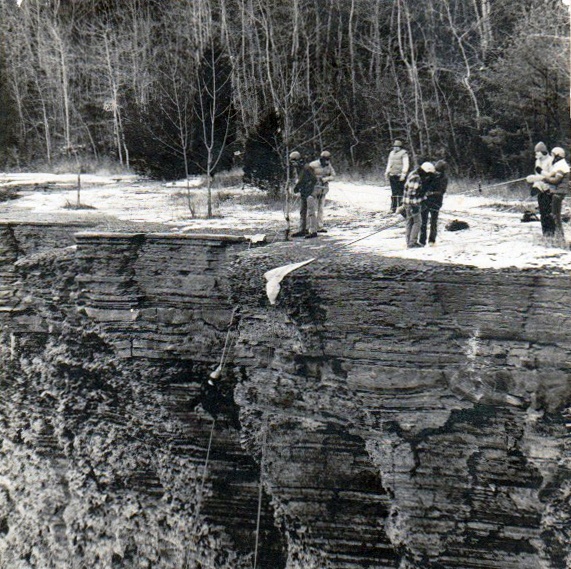
The program, then called Wilderness Reflections, grew quickly and has continued to grow in the years since Dave left Ithaca in 1984. Today, as the Cornell Outdoor Education (COE) program celebrates its 50th anniversary, “It’s no exaggeration to say Cornell’s outdoor program is the largest and best on any campus in North America,” Dave says proudly.
Dave recently moved back to Ithaca after spending 37 years in other locales, where he continued to teach rock climbing, conduct leadership seminars and webinars, and write grants and magazine features. He currently chairs the advisory board of Cornell Outdoor Education, which is overseeing plans for the big 50th anniversary celebration happening later this year.
He says that he’s still trying to put his finger on what exactly he does for work. “This is a question my future mother-in-law wondered about 50 years ago,” Dave jokes. “My field is wholeness, or perhaps it’s holiness,” he says. “It’s about helping people, teams, and organizations find the right balance of work and play, and pursue a vision—while at the same time remaining open to serendipity.”
Dave’s winter hack: “Get out there! Learn how your body can adapt to almost any kind of weather. Create a warm, cozy space to greet you when you come inside. Have a Netflix subscription and don’t feel guilty about binge watching. And keep an emergency box in your car with extra clothes, snacks, jumper cables, etc. Very important.”
Riding a one-horse open sleigh
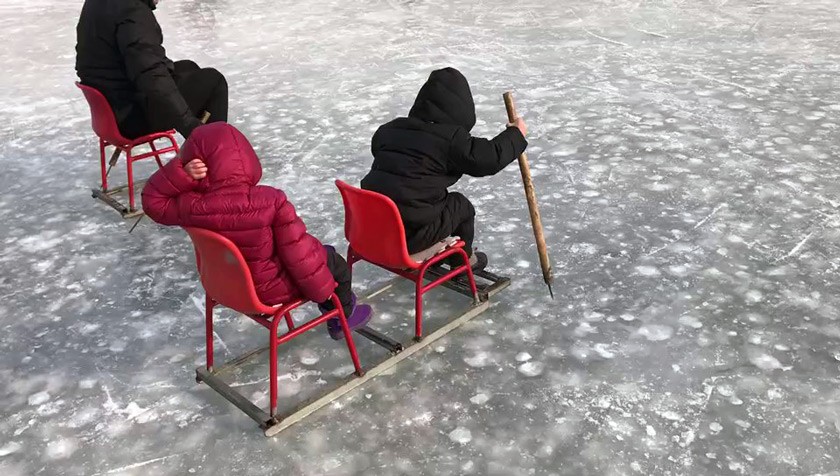
Enjue Wang MEng ’08 grew up in northern China in Shenyang, the birthplace of the
Qing (Manchu) Dynasty (1644–1912)—the last imperial dynasty of China. When Enjue attended school, the city had plows to clear the snow from major roadways. But he worked together with his classmates to shovel the smaller thoroughfares around their school and community, especially after a heavy snowfall.
“It was tough work,” he says, “but somewhat interesting to get a break from the classroom and do some good, in the open air with fellow classmates.”
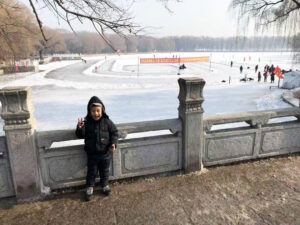
Enjue and his wife Jin also provide the horsepower for their children’s sleighing fun. “Mom and Dad take turns propelling the sleighs,” he says, adding, “sometimes older kids may take the younger kids for rides, too.”
He says that he’s not aware of organized sleigh races, although sometimes riders compete with one another informally. “If you run too fast on the ice, you most likely will fall,” he cautions.
Another seasonal activity Enjue describes is something he doesn’t partake of himself: winter swimming. “Winter swimming is for the toughest,” he explains, “typically middle-aged men and women.” The swimmers gather in groups of three to six and jump into the river, before the water is frozen solid. According to Enjue, they usually swim early in the morning, “after the sunrise, while the young people are still sleeping.”
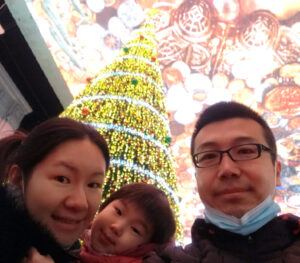
Winter is also the time of the Spring Festival—a seven-day holiday celebrating the Chinese New Year. “This is a time to get together with family and enjoy warmth and a big meal,” Enjue says. “People typically get fat afterwards just like at Thanksgiving time,” he adds.
Enjue is looking forward to enjoying dumplings, and a special house salad with cabbage, cucumber, angel hair noodles, and sesame butter during this year’s festival, which starts on February 1, 2022.
Enjue’s winter hack: “Walk outside. Reach out to your friends and organize indoor parties (board games, movie nights, or just chat over a meal). Do not get lazy about getting dressed and making the trip.”
Sled dogs: born to run
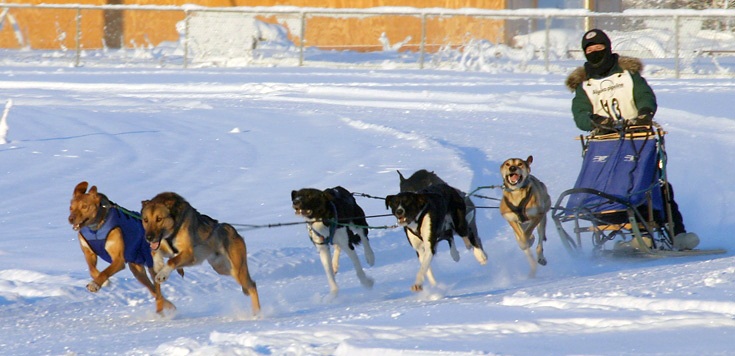
Heather Huson ’97, PhD began racing sled dogs with her family when she was seven years old, and never looked back. She raced for the next 25 years, including her years as an undergraduate at Cornell.
“When my sister was two years old, we used to strap her stuffed bear into the sled basket to race with her!” Heather says. “We raced as a family, training in the fall, racing at about 5-8 races each winter, and raising puppies in the spring and summer. It was a great way to grow up!”
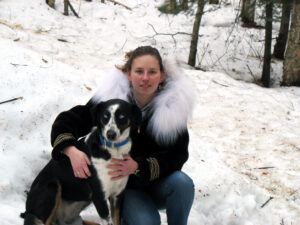
The family traveled across the northern U.S. and into Ontario and Quebec for races, and Heather’s own racing career led her to Alaska, where she raced in professional classes for six years (2001–2007). According to Heather, sled dog racing is not a lucrative sport. “Despite being ‘pro’ and racing for money, you’re lucky if you can pay for your hotel or some dog food with your winnings,” she chuckles.
Heather says that giving up racing when she started graduate school at the University of Alaska was among the toughest decisions of her life. “Raising kids and earning tenure are right up there with giving up racing,” she admits.
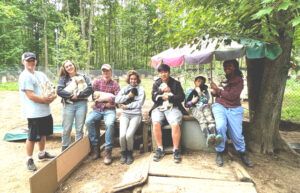
Fortunately, Heather’s research keeps her closely involved with sled dogs. Her research focuses on the genetics of sled dog health and performance. “I focus on identifying markers and genes that influence traits of health and performance. The aim is to understand the genetic regulation of these traits more thoroughly, and to use this information for more informed selection and breeding of animals,” she explains.
Sled dog mushers choose their dogs based on their speed, endurance, confirmation, and blood lines. “They love to run and want to run. Usually, their worst command is ‘Whoa!,’ as they hate to stop running,” Heather says. “The amount of effort put into training a good team is astounding, but the reward of having that team perform is priceless.”
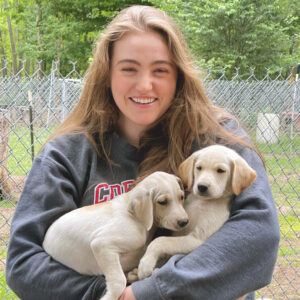
Though she’s sad that her own children are not growing up racing, Heather does have a team of eight dogs. “One of my favorite pastimes is cuddling with the dogs on the sofa by the woodstove and reading a book,” Heather says.
Heather’s winter hack: “I think it’s important for us (kids and adults) to stay active in the winter. It’s also important to know how to manage the cold and winter. For example, we should know how to drive in winter conditions and what to do if the power goes out, and to keep emergency gear in both your house and vehicles. It’s like teaching people how to read a paper map, as opposed to relying solely on Google Maps.”
Fondue (recipe included)
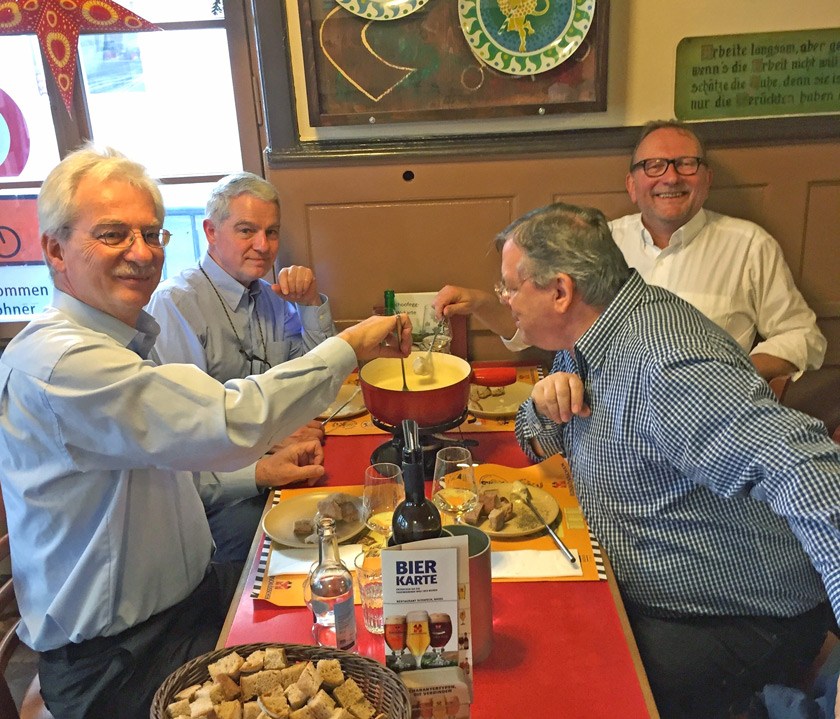
Bernie MacCabe ’75, MBA ’79 says that his favorite winter activity in his home country of Switzerland is enjoying fondue with family or friends. He translated this traditional recipe for those who would like to try whipping up some fondue for themselves.
Bernie’s fondue tips: “Many use Vacherin cheese instead of Emmentaler. We usually drink a Swiss white wine (Fendant aka Chasselas aka Gutedel) with the fondue and quite often have a glass of Kirschwasser (schnapps) to dunk the bread in. Some measures taken during the pandemic are to serve individual fondues in small pots, or to use two forks, one for dunking the bread in the cheese and the other for eating the fondue (after transferring bread and cheese to a plate).”
Awe-struck

Jordan Boersma arrived in Ithaca just a few weeks ago, to begin a postdoc at the Lab of Ornithology. “I’ve greatly enjoyed marveling at the massive icicles hanging from the gorge walls around Ithaca,” he says.
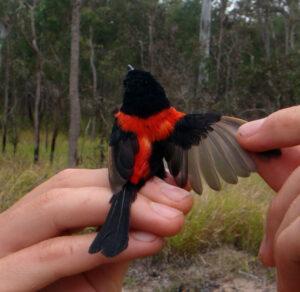
Jordan has spent much of the last decade studying Fairywrens, colorful little birds native to Australia and New Guinea. He has collaborated with Lab of O researchers for the past several years and is thrilled to officially join the Cornell team.
Jordan moved into his new home just a few hours before a winter storm dumped nearly a foot of snow on Ithaca. Having grown up in Grand Rapids, Michigan, he’s no stranger to winter, however. He recalls many winters spent building elaborate snow forts and tunnels with his friends.
“We would routinely build 3-foot to 4-foot-high forts to use during long snowball fights,” he says. “They were often positioned to protect me and my friends against strikes from the neighbor kids’ fort as we engaged in (playful) battle. The forts would last for weeks and even months with some fortifying, as it rarely warmed up enough in the winter back then to melt them.”

The tunnels only happened after the heaviest snows. Jordan recalls sitting in the tunnels with his friends, spending hours just being silly. “Through a kid’s eyes, it felt like you could get lost in them,” he recalls. He enjoyed his recent visit home, where he had the chance to play in the snow with his niece and nephew and relive his childhood memories with them.
Jordan’s winter hack: Get out and play in the snow!
Winter escape: Patagonia!

Nick Groos ’84 is a third-generation Cornellian who grew up attending reunions with his family. He fell in love with the gorgeous campus and decided to apply to and attend Cornell. “The fact that the drinking age in N.Y. was still 18 at the time also might have had something to do with it,” he admits.
He studied French in high school and for a year at Cornell. When the opportunity arose to work for his family’s firm in Luxembourg, he accepted. “I thought my French would come in handy,” he says. “It turns out that the typical Luxembourger prefers to speak Luxembourgish (what a surprise), instead of French or German,” he explains.
Nick met his wife soon after he moved to Luxembourg and ended up staying there, refining his Luxembourgish over the years. “The language has the unique trait that there are no formal spelling rules; you can write the words however you want and never get into trouble,” he says.
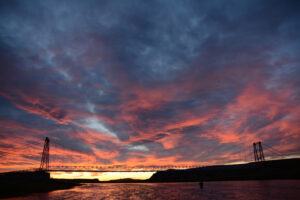
For the past several years, Nick has enjoyed an annual “once-in-a-lifetime” winter vacation to a remote area of Patagonia. “It’s like Gilligan’s Island’” he says. “🎶No phone, no lights, no motorcar… not a single luxury🎶, and no internet!”
His favorite escape is in Rio Gallegos, Argentina. This area is famous for the 40km of river that runs through it and for the river’s giant sea-trout. “Rising in the Andes mountains, it’s one of the few remaining undammed, wild, and free rivers in the world, with a large population of sea-trout,” he says.
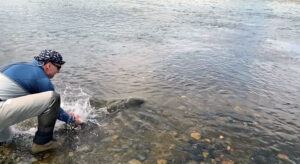
The fish were transplanted from Scotland nearly 100 years ago, and they weigh as much as 30 pounds. Like salmon, they are born in the freshwater of Rio Gallegos, migrate to the ocean, and return annually to the river to spawn. “It’s a catch-and-release fly fisher’s dream!” Nick says.
The weather is not what one would expect for a winter escape. “You need to be prepared for driving rain, even sleet, and 60-mile-an-hour winds,” Nick explains. But, he says, putting up with the unpredictable weather is worth it. The rewards include the opportunity to see “flamingos, condor, guanaco, armadillos, migrating birds of all sorts, and—last but not least—to be on the other end of a steaming silver freight train: a sea-trout!”

